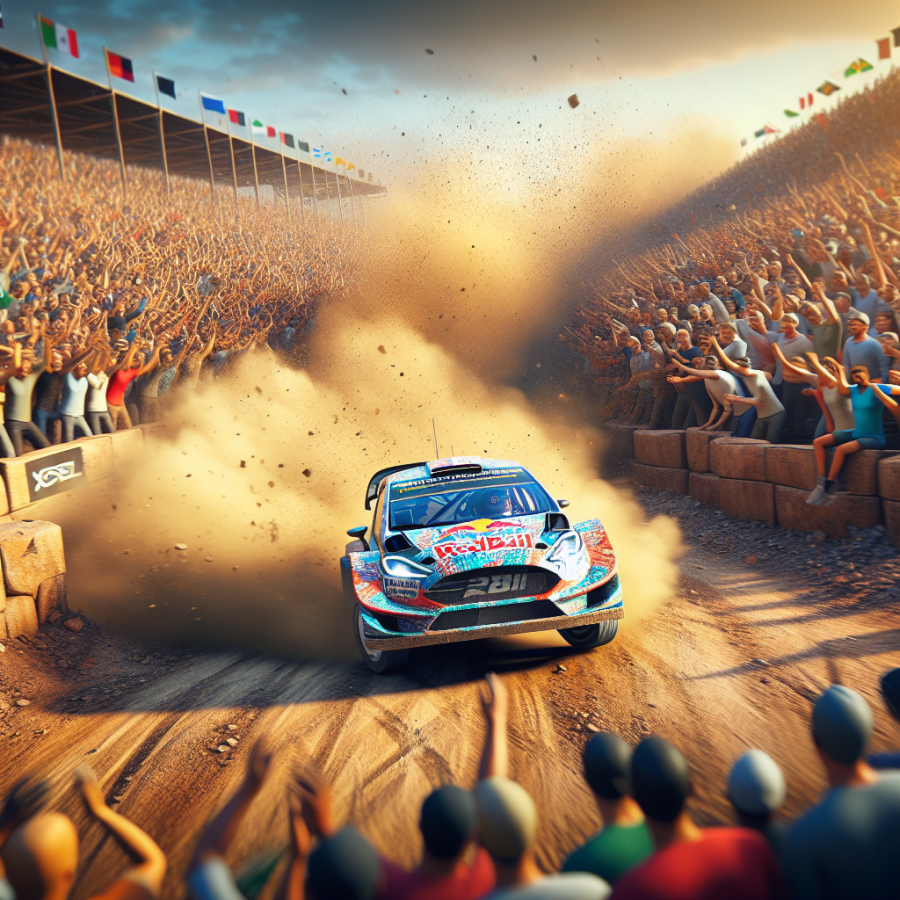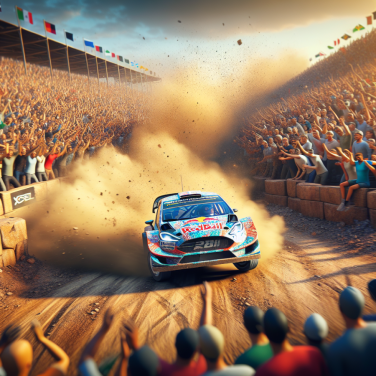Navigating the Thrill: An Inside Look at Rallycross's High-Octane Challenges
Navigating the thrill of rallycross requires more than just raw power and speed. It demands a blend of tactical prowess, car control, and mental agility, all while battling both the clock and a field of fiercely competitive drivers.
One of the unique challenges of rallycross is the varying terrain. Drivers must transition seamlessly from asphalt to dirt or gravel, often within a single lap. This constant change in driving conditions requires a vehicle that is not only powerful but also highly adaptable. Suspension settings and tire choices become pivotal decisions that can greatly affect performance. Drivers and teams spend countless hours testing and tweaking their setups to find the optimal balance for each track's idiosyncrasies.
The starts in rallycross are famously explosive and can often determine the outcome of a race. With cars launching from 0 to 60 mph in less than two seconds, reaction times are critical. A split-second delay can see a driver plummet from the front of the pack to the back. Launch control systems are meticulously calibrated to ensure maximum traction and minimal wheel spin, but ultimately, it's the driver who must harness this raw power and channel it into a perfect getaway.
Door-to-door racing is at the heart of rallycross excitement but comes with high stakes. Physical contact is a given, and navigating these close encounters requires a mix of aggression and restraint. Drivers must know when to push for an overtake and when to hold back to avoid collisions that could end their race. This aggressive driving style can often lead to mechanical failures or punctures, so race teams need to build cars that can withstand the rigors of combat.
In rallycross, the 'joker lap' adds a strategic element to the racing. Drivers must complete this alternative section of the track, usually longer and more time-consuming, at least once during the race. Deciding when to take the joker lap can be a game-changer. It involves predicting opponents' moves and can lead to sharp shifts in position. Drivers and their spotters – team members who communicate with the driver from an overview position – work together to make split-second decisions on when to take the joker for maximum advantage.
Mental toughness is as important as physical skill in rallycross. The intense atmosphere, with races decided in a matter of minutes, hardly offers a moment to breathe. Drivers need to maintain peak concentration to avoid mistakes that could be amplified by the close quarters and unforgiving pace.
Read also:
T20 Mania: The Explosive Rise of Short-Form Cricket
Masters of Mud and Machines: The Drivers Fueling Rallycross Excitement
Rallycross racing is a high-adrenaline motorsport that combines the thrill of racing with the challenging dynamics of off-road terrain. At the heart of this spectacle are the drivers, the undisputed masters of mud and machines, whose skills and fearlessness behind the wheel create an electrifying atmosphere at every event.
These drivers are a unique breed. They possess an innate ability to harness the raw power of their rallycross cars, beasts equipped with turbocharged engines and sophisticated all-wheel-drive systems designed for explosive acceleration. With horsepower figures often exceeding 600, these machines can surge from 0 to 60 mph in less than two seconds, outpacing even the most exotic supercars.
Navigating through a mixture of dirt, gravel, and asphalt, rallycross drivers must constantly adapt to rapidly changing conditions. The mastery lies in the delicate balance between aggression and finesse. They slide their vehicles through corners with precision drifts, sending plumes of dirt skyward, only to seamlessly transition to tarmac, where grip levels surge and driving techniques shift.
Tire choice and management are critical components of their strategy. Drivers and their teams must anticipate track conditions and make split-second decisions on tire compounds and tread patterns. In the pits, mechanics work feverishly to adjust suspension settings, optimizing the cars' performance for each section of the course.
The start of a rallycross race is a spectacle in itself. Drivers line up in a tight grid, engines growling with anticipation. When the lights go out, the race to the first corner is nothing short of a controlled explosion. It's a high-stakes game of chicken—drivers must balance the desire for an early lead with the risk of collision and damage to their vehicles.
Amid the chaos, these drivers demonstrate extraordinary situational awareness. They must constantly be mindful of their competitors' positions while executing daring overtakes and defending their own line. Contact is not uncommon, with cars often trading paint as they jostle for position. It is this unyielding competitive spirit that captivates fans, keeping them on the edge of their seats.
Moreover, rallycross drivers are well-versed in managing the infamous "joker lap"—a slightly longer route each driver must take once per race. The strategic timing of the joker lap can make or break a race, adding another layer of tactical depth to this already complex motorsport.




